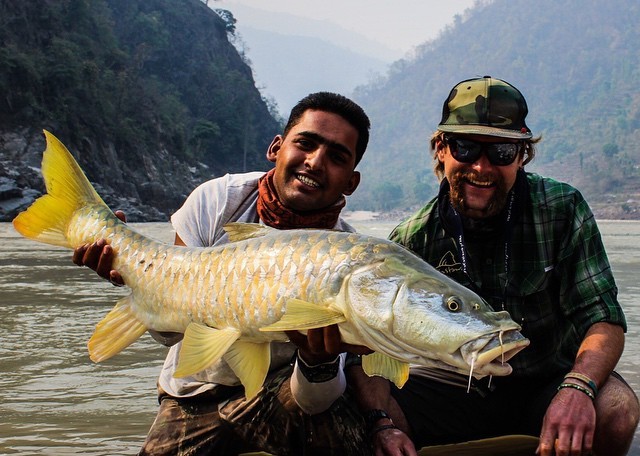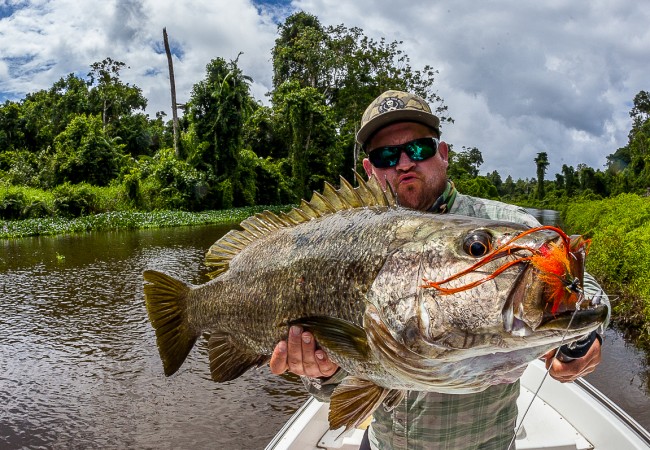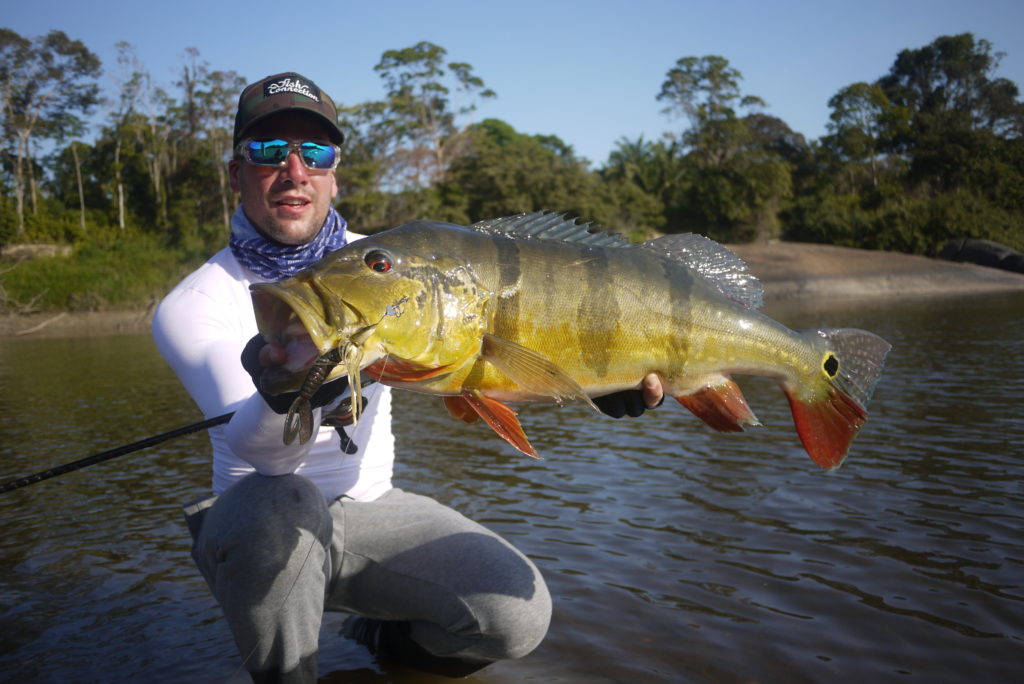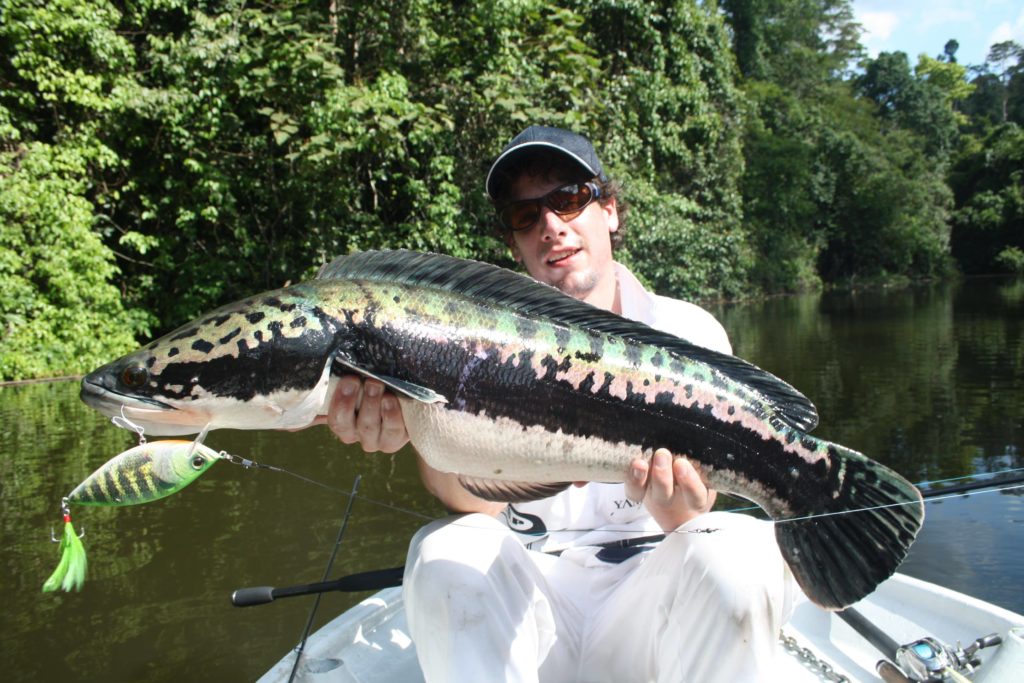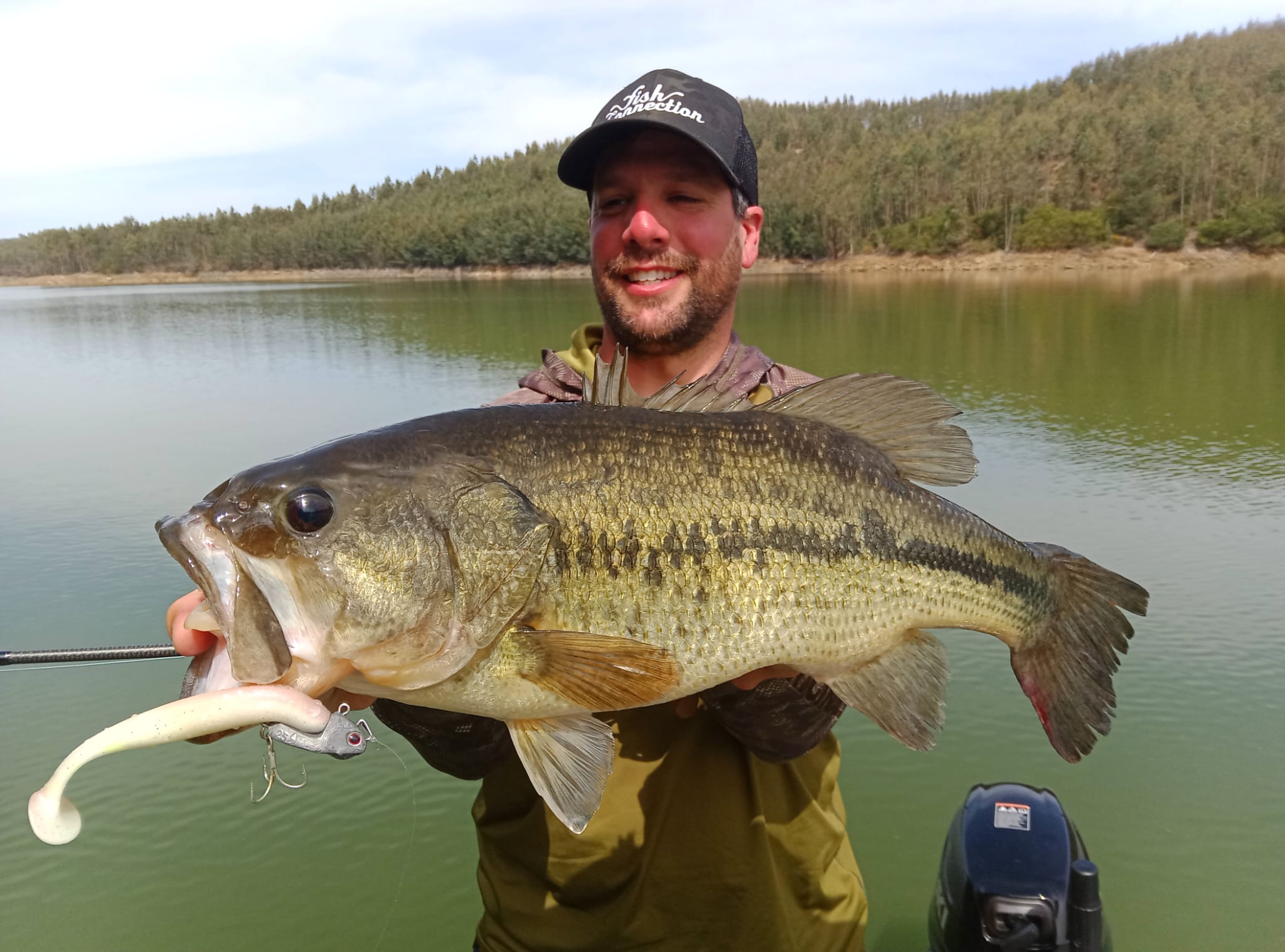
Black bass is a real a treasure trove for lure fishing enthusiasts just like us. This freshwater fish, originally from North America, has conquered our French waters to become the world's most popular fish. one of the most sought-after carnivores for sport fishermen. And not just in France! Originally from the south of France, we were lucky enough to discover this fish very early on in our youth. The first time a black bass took to our stickbait, its explosive attack and acrobatic jumps were moments that instantly won us over. It's this experience that we'd like to share with you today, through a comprehensive presentation of black bass, its behaviour, its habitat and ways of fishing for it.
Our article in brief
Black bass are a treasure trove for lure fishing enthusiasts, offering memorable fights on the water's edge.
- Distinctive morphology The black bass has a stocky body, a wide mouth and a dark green back with a characteristic black lateral stripe.
- The blackbass is a fearsome fish that thrives in the calm waters of southern and western France, hunting from submerged structures.
- This fish is mainly fished with lures, with particularly spectacular explosive attacks on the surface.
- The Black bass reproduction takes place in spring (mid-April to late June) during which the male fiercely protects the nest.
Characteristics of black bass: a captivating fish
Black bass, a member of the Centrarchidae family, comes in two main species:
- Largemouth black bass (Micropterus salmoides)
- Smallmouth black bass (Micropterus dolomieu)
In France, it is essentially the former that has been successfully established since its introduction at the end of the 19th century.
The largemouth black bass has a particularly recognisable morphology. This fish has an imposing head and a mouth that opens right up to its eye, hence its name. Its stocky, robust body has very distinctive colours: dark green back, green and yellow flanks, white bellyall topped off with a uniform, wide black side stripe. Dark wave markings also adorn its flanks.
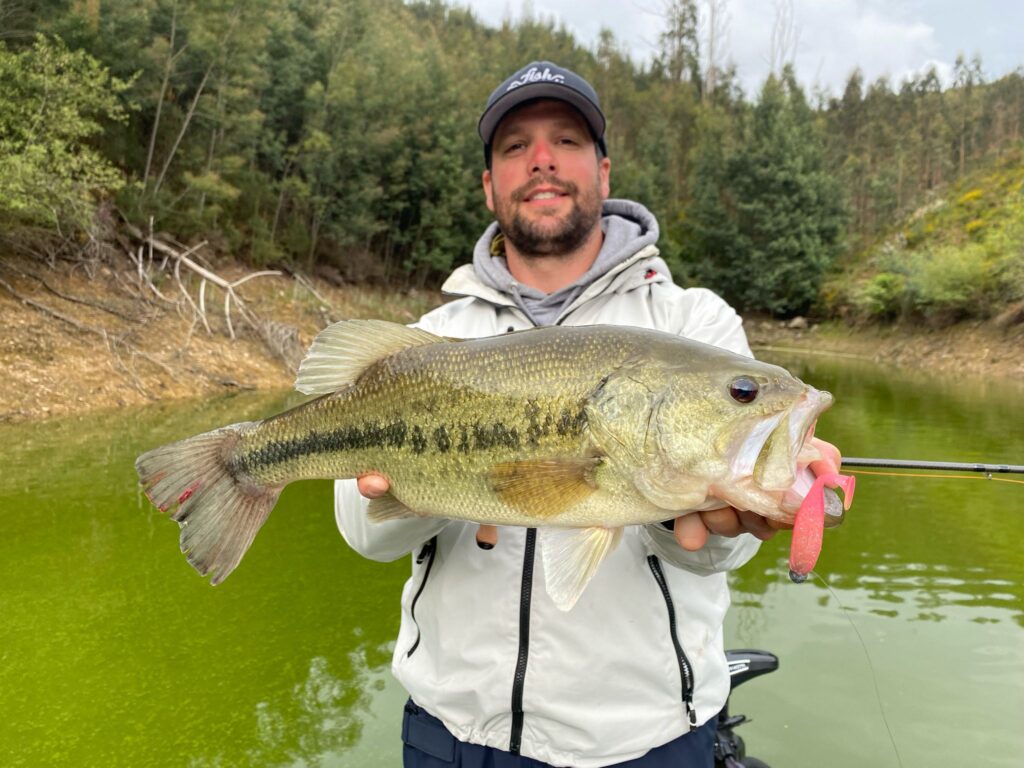
Its dorsal fin, divided into two parts, has 10 to 13 spiny rays in its anterior section, followed by 12 to 13 flexible rays in the posterior section. Its pelvic and pectoral fins are relatively short.
In terms of size, this carnivorous fish generally reaches an average size of 35 cm and weighs around 1.5 kg. Record specimens, however, can exceed 50 cm and reach 4 kg in France, or even 10 kg in Canada or Spain. During a session on a private lake in the south-west of France, we were lucky enough to catch a magnificent specimen weighing 3.2 kg, an unforgettable memory that took us almost 10 minutes of fierce fighting!
In terms of longevity, blackbass can live for 10 to 15 years under optimum conditions. Sexual maturity generally occurs around the 3rd or 4th year of life.
| Features | Largemouth black bass | Smallmouth black bass |
|---|---|---|
| Medium size | 35 cm | 30 cm |
| Average weight | 1.50 kg | 1 kg |
| Preferred habitat | Calm waters (lakes, ponds) | Rivers, gravel beds |
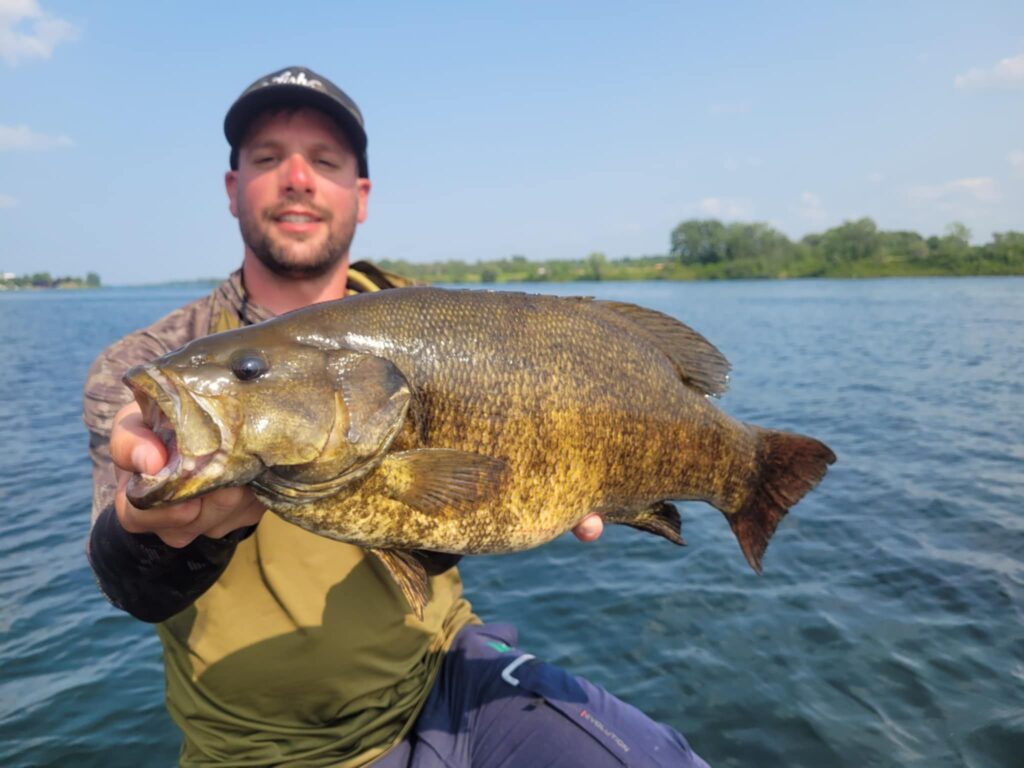
Habitat and behaviour of black bass in French waters
Black bass are mainly found in the south and west of France. However, its range is gradually moving northwards as the climate warms up. Largemouth black bass are particularly fond of the calm, lightly polluted waters of lakes and riversIts small-mouthed cousin prefers watercourses with gravel bottoms.
This predatory fish hunts on the prowl and feeds mainly on:
- Small fish
- Crayfish
- Frogs
- Aquatic insects
- Various crustaceans
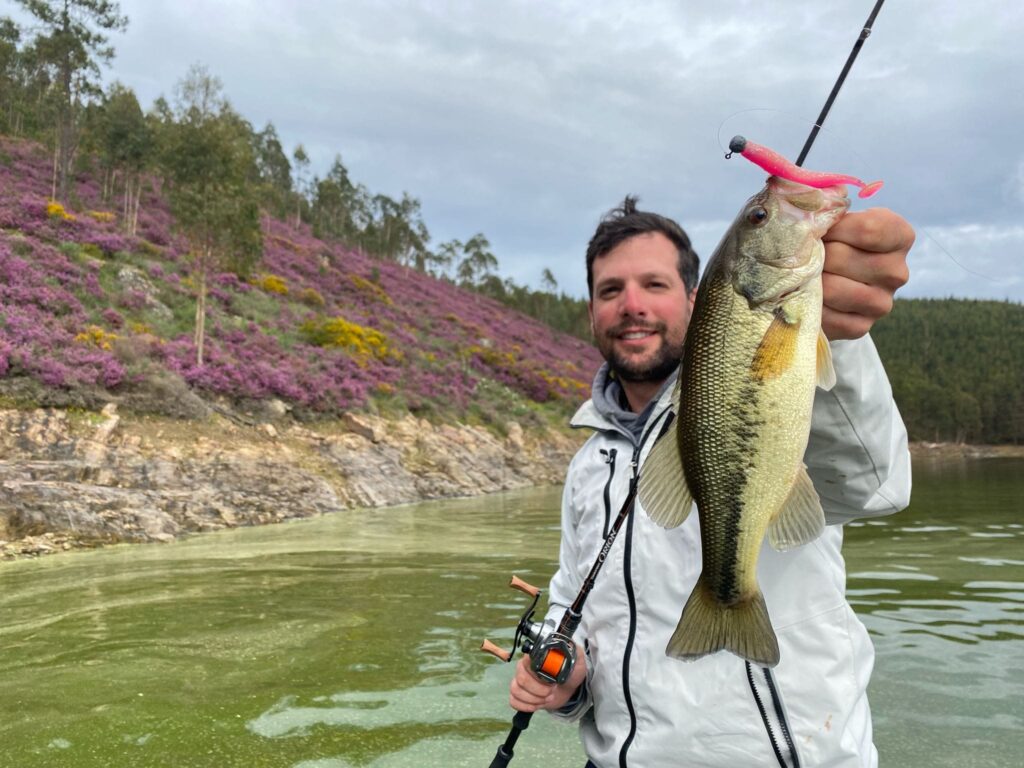
Black bass generally live in shoals, often close to the surface, and are sometimes impressively voracious. On several occasions, we observed its formidable hunting technique during morning sessions, when it ambushes its prey from seagrass beds or submerged structures.
Black bass reproduction and regulations
The black bass breeding season takes place in spring, between mid-April and the end of June, when the water temperature reaches around 18°C. The male digs a nest about a metre in diameter in sandy or gravelly bottoms. Once the female has laid her eggs, the male takes charge of their protection, fiercely defending the nest until they hatch and even beyond, until the fry leave it about a month later.
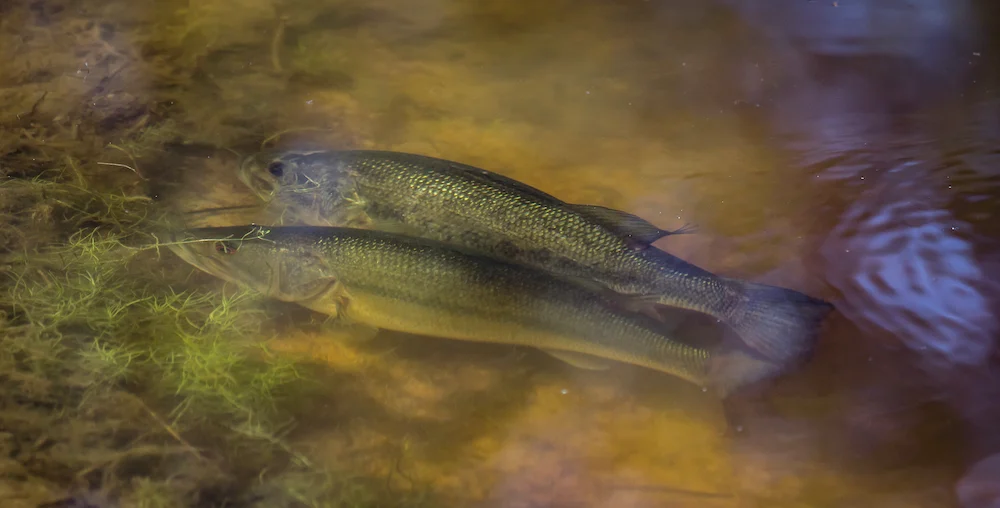
The spawning season is a special time for us as responsible anglers. We systematically impose a truce on ourselves during this crucial phase, to allow the fish to reproduce peacefully and ensure the survival of the species in our waters.
In France, fishing for black bass is governed by fishing laws and departmental and regional regulations. Here are some of the main rules that apply to pike fishing in France:
- Minimum catch size. The minimum size for catches varies between regions and departments. In general, the minimum size is 40 cm. However, it may be higher in certain regions or at certain times of the year.
- Closed periods. There are closed seasons for blackbass fishing, generally during the breeding season.
Fishing for black bass: techniques and equipment
Fishing for black bass is a true sporting discipline that requires technique, finesse and constant adaptation. This fish fully deserves its nickname of "freshwater tarpon" thanks to its fighting spirit and impressive leaps out of the water when hooked.
Lure fishing is undoubtedly the preferred method for targeting this predator. Topwater fishing offers a particularly exhilarating experience, with visual and explosive attacks. Here are the main types of lure that are effective in different conditions:
- Poppers - For slow fishing of marked spots
- Stickbaits - Ideal for prospecting large areas
- Frogs - Perfect for areas with dense vegetation
- Buzzbaits - Noisy decoys to attract attention
- Prop baits - Propeller lures that create attractive eddies
For lure fishing with treble hooks, we recommend a 2.10 m rod with a regular-fast action, a reel with a 6.4/1 ratio and 0.25 to 0.33 mm nylon. For single hook rigs, opt for a rod of the same length but with a fast action, a reel with a higher ratio (7.5/1 to 10.1/1) and a 4-strand braid of 0.30 to 0.40 mm.
Adapt your fishing techniques to the environment
Strategically, you should adapt your approach to the time of day. Mornings are ideal for prospecting open spots, while in the middle of the day you'll have more success targeting shady areas and dense vegetation. In summer, prefer to fish from a boat or concentrate your efforts on the evening slots when the banks are less busy.
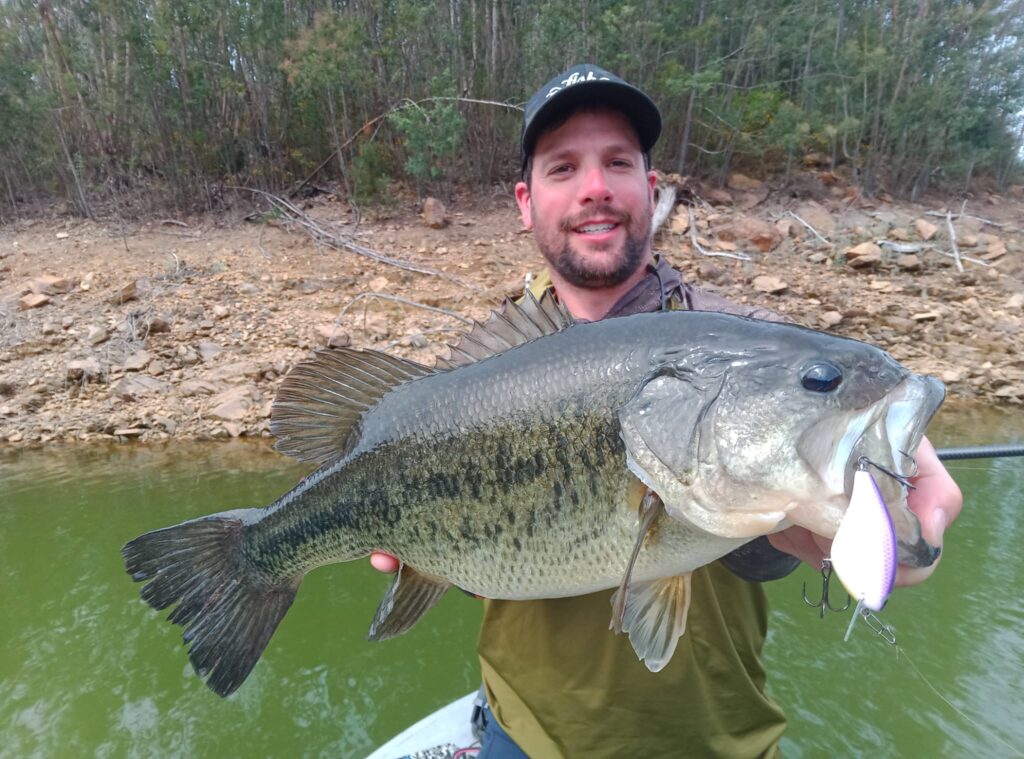
Discretion is the key to this subtle catch. We've learned the hard way that an overly noisy or hasty approach can compromise an entire session! Always cast at a good distance (minimum 5 metres) from the fish you spot, and use a jerky retrieve to imitate a wounded prey.
If you'd like to try your hand at this exciting sport, get in touch with local associations or take part in guided outings. Black bass are well worth your attention, and will provide you with memorable battles that will keep you coming back to the water again and again!
Useful links dedicated to black bass and fishing
How to fish black bass in summer?

